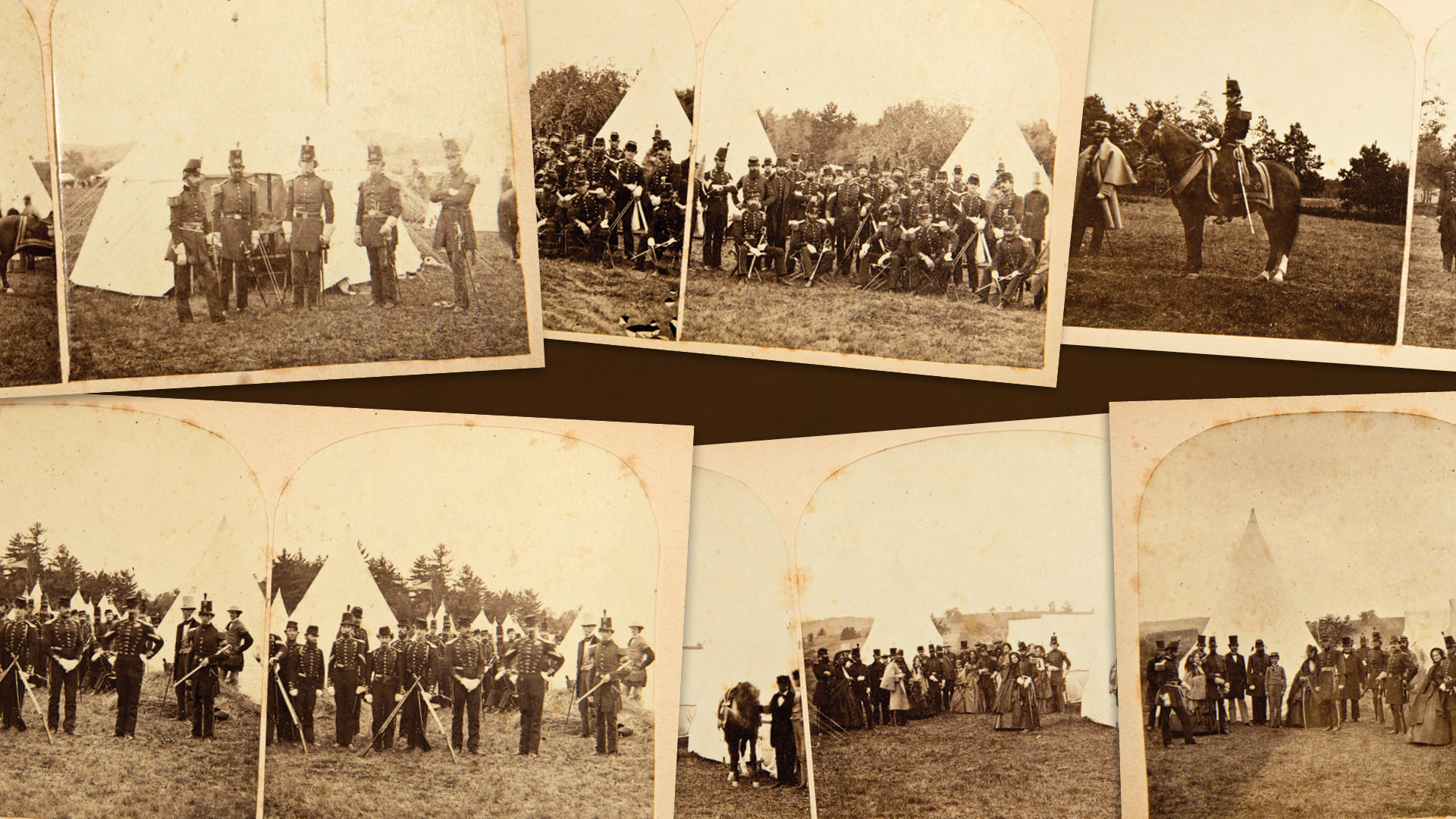War was still a bloodless adventure when these rare camp images were taken.
The six stereoviews on these pages, taken in November 1861, show the 1st Massachusetts Volunteer Cavalry assembling at Camp Brigham in Readville, Mass., roughly two months after volunteer cavalry companies—nearly all drawn from state militia—began to muster in Massachusetts. Upon forming at the camp, the 1st expected to select its field officers from its own ranks, but Massachusetts Governor John Andrew interceded. Andrew felt that professional leadership was required in preparing qualified units on short notice. For the 1st, he handed the command reins to Virginia native Robert Williams, a former 1st Dragoon, and named Horace Binney Sargent, a member of his own staff, as lieutenant colonel.
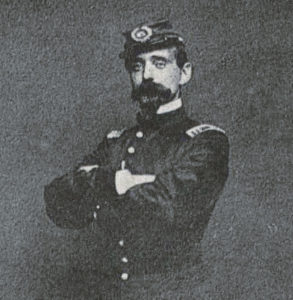
At the outset of the war, many volunteers considered the cavalry a more appealing and dashing option than other branches of the military. To be truly proficient, however, most troopers needed to train for long periods of time, usually months. Andrew deserved credit for correctly recognizing the difficulties entailed. By the fall of 1861, the war that many had once predicted would be short had become a bloody, drawn-out affair. With a call from President Abraham Lincoln for more men to fight, time was not a luxury.
Despite his Virginia roots, Williams was a prudent choice. A member of West Point’s Class of 1851, he had received a strong recommendation from Lt. Gen. Winfield Scott, who promoted Williams to colonel on September 11, 1861. Williams faced significant challenges, however. The men who volunteered for the 1st Massachusetts had not been selected for their horsemanship or even their size and weight. Many, in fact, had never even been on a horse before.
When Williams and Sargent arrived, they faced a disgruntled assortment of men, unhappy to learn that their officers would not be chosen from among their own, and Williams’ decision to disband the old militia companies caused further discontent. The colonel was a strict disciplinarian and immediately began working to control his green and unruly troops. In early October, Williams issued an order demanding that quiet be maintained in the camp after Taps. A few days later, he issued another order demanding that his men spend an appropriate amount of time caring for their horses. He would also write to Andrew critiquing the company officers’ physical and leadership fitness. Some he claimed were too old, some too heavy to ride horses, and others “lacked energy of mind.”

combat, troopers would secure a sword knot (right) to the hilt and wrap it around their wrists. (Heritage Auctions)
To squelch mounting insubordination, the general began to dismiss the more rebellious company officers and imprison unruly men. On October 31, he ordered prisoners in the guardhouse the vile task of policing the stables and removing manure “before reveille.”
As the weeks progressed, the situation in camp remained unsettled. When 2nd Lt. Nathaniel Bowditch reported for duty in Readville on November 5, 1861, he was struck by the men’s rebellious spirit. That very afternoon, in fact, force had to be used to subdue a melee in which one trooper was wounded by gunfire. Following the incident, Williams decided that he also needed to select the unit’s company officers. Around Thanksgiving, new replacements began to arrive.
Sent to South Carolina in the spring of 1862, the 1st first saw action on May 28 at the First Battle of Pocotaligo, and then at Secessionville on June 16 before returning to the Eastern Theater. The 1st remained engaged throughout the war, mainly as part of the Army of the Potomac’s Cavalry Corps, before mustering out on June 29, 1865.
Williams remained the unit’s commander until October 1862, at which point he resigned and joined the Adjutant General’s office in Washington, D.C. Among Boston-area notables to serve in the unit were Charles Adams, grandson of John Quincy Adams; Henry Lee Higginson, founder of the Boston Symphony; and Charles A. Longfellow, son of Henry Wadsworth Longfellow.
The stereoviews here can be dated to early November 1861, before the unit received new uniforms and while some leaves remained on the trees. They were taken by Black & Batchelder, a Boston-
based partnership formed by James Wallace Black and Perez M. Batchelder. (In 1860, Black gained fame for his photographs taken from a balloon over Boston, the first bird’s-eye views of the city.)
Rich views of militia uniforms and camp life come across in the photos. While many of the faces and details are blurred, several of the men can be identified when compared with known photographs of the 1st Massachusetts’ officers and from its regimental history. Many of the company officers pictured, however, were likely among the discontented members of the unit and would be dismissed by month’s end.
That first fall of the war was a cold and wet one, and several individuals are wearing overcoats. Even though many of these men were unhappy about their new leaders, the excitement of having their photographs taken seems to have overshadowed their ill sentiments—at least temporarily. The men are decked out in their parade finest and appear upbeat regarding the great adventure into which they were about to embark.
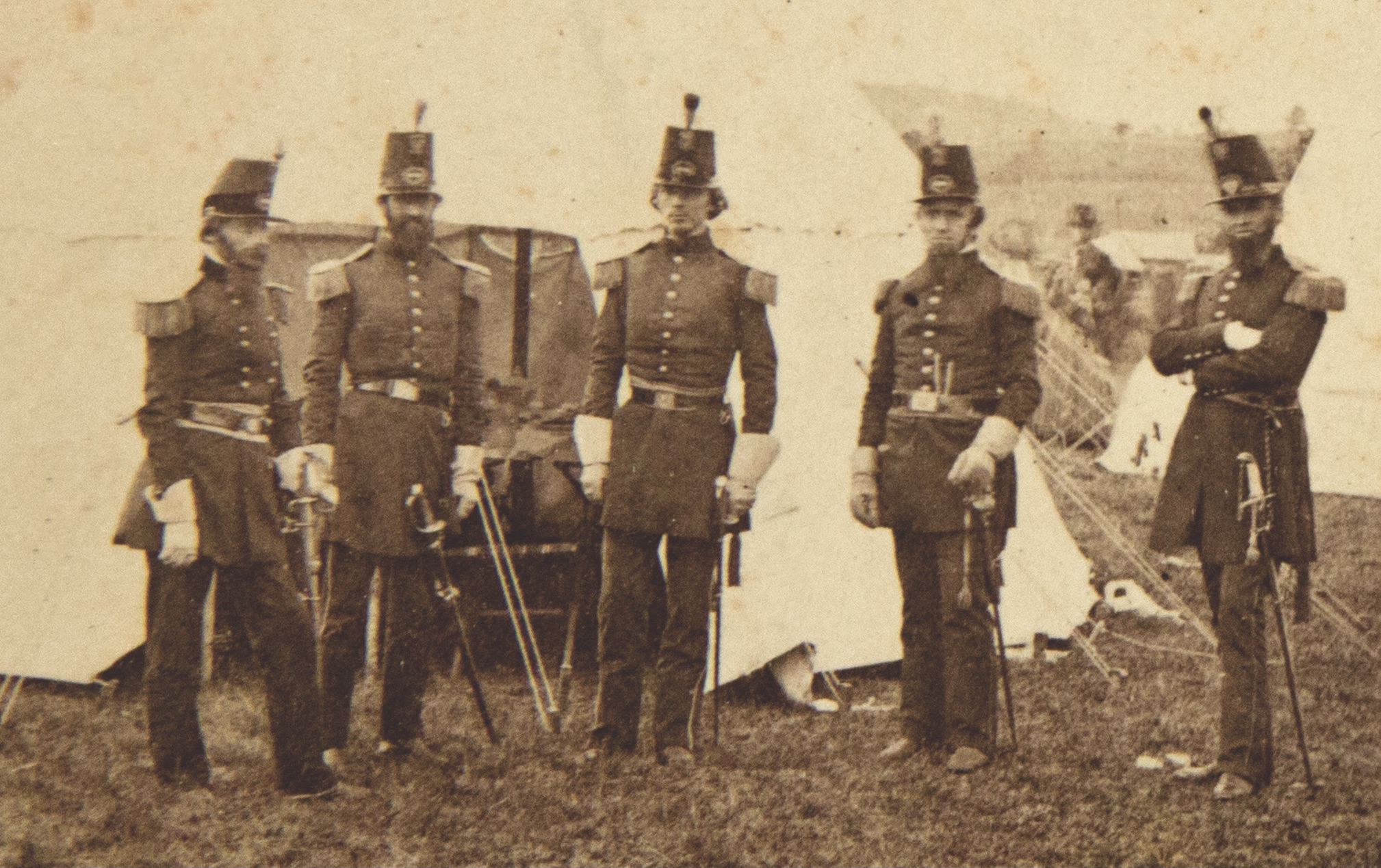
Photo #1 shows a grouping of five staff officers; Colonel Robert Williams is on the far left. All five men wear Model 1851-pattern shakos, adorned with wreaths, brass eagles, and long pom poms, shrunken into round balls in line with 1851 Army regulations. One can see the dark band on Williams’ shako as well as a velvet standing collar on his coat. The insignia just above the visors of each shako are blurred but appear to indicate “U.S.” at the center of an eagle-laden wreath.
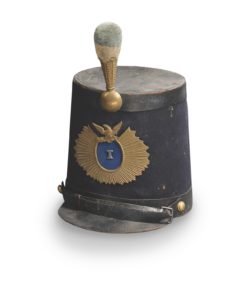
The officers all wear epaulettes and belts with officer’s sashes that circle their waists. The officer second from right displays a pocket watch chain, and one can see a sword knot—a safety device designed to prevent a cavalryman from dropping his weapon during battle—dangling from his sword.
The officer on the far right is likely Major William F. White, the most senior militia officer, whom many of the men had hoped would be appointed to lead the regiment.
The horse on the far right of the picture is wearing a regulation blanket with an eagle and one star, indicating it was likely to be ridden by a brigadier general. This same horse is seen in two other pictures.
The tents are set against woods and overlook fields of rolling hills and scattered trees. The tent directly behind the men is an officer’s Marquee tent with double poles.
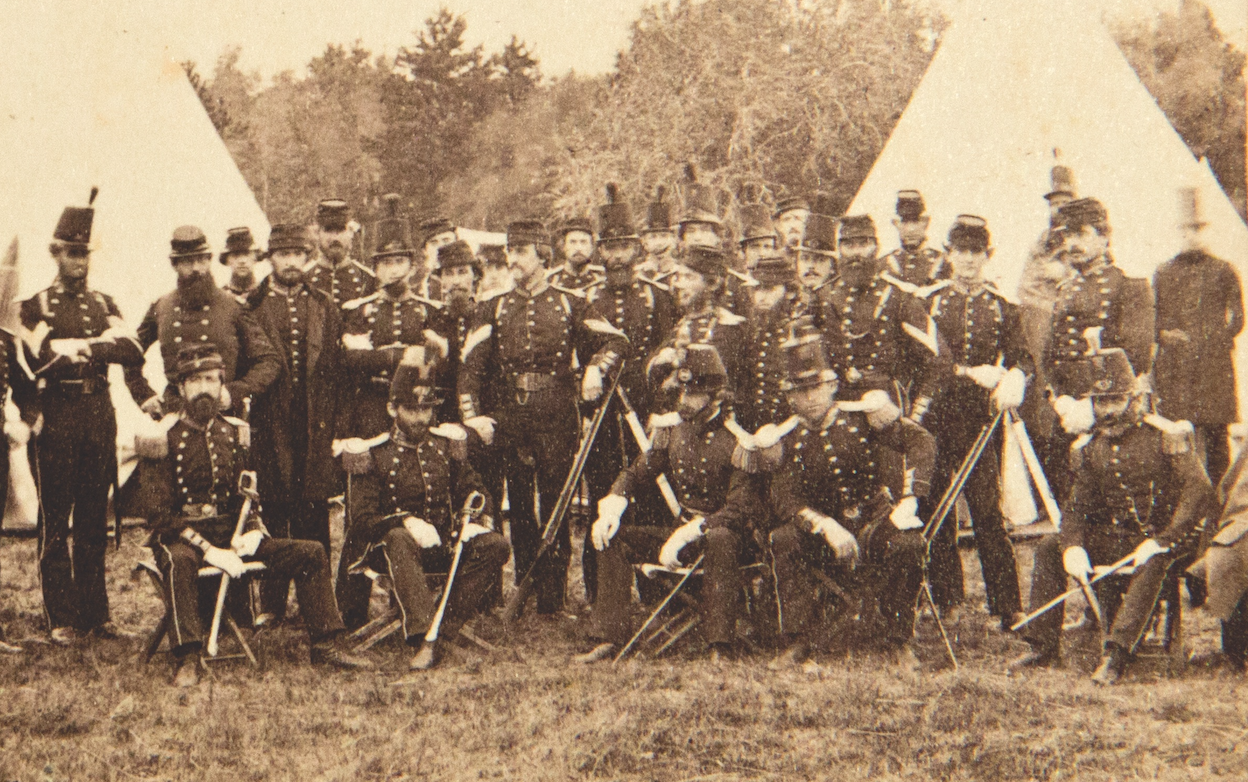
Photo #2: Williams (center) and four of his officers are shown seated in front of a number of soldiers and other officers. Several are wearing swallow-tailed militia coatees, with ornate sleeve buttons, high collars, and epaulettes. Major Greely S. Curtis is seated far right (1). An infantry horn with the numeral “1” in the center adorns his shako. Curtis served as captain of the 2nd Massachusetts Infantry before joining the 1st, and commanded the unit during the Battle of Gettysburg.
The two officers seated to the left of Williams display Model 1850 field and staff officer swords. Two sets of rifles, stacked in threes, are propped just behind the seated officers—likely two-banded Pattern 1853 Enfield rifle-muskets (see P.48).
Seated on the far left is Surgeon James Holland (2), who joined the regiment on September 14. Seated to Holland’s immediate right is 35-year-old Lucius M. Sargent (3), half-brother of Lt. Col. Horace B. Sargent. Sargent, whose shako also is adorned with an infantry horn, had been a member of the 2nd Massachusetts Infantry prior to reporting to the Readville camp on October 31.
David B. Keith (4) stands directly behind Holland. The 30-year-old Keith joined the unit on September 25 as a first lieutenant and was promoted to captain on November 25. He wears a double-breasted frock coat and 1861 forage cap.
Standing at far right is Nathaniel Bowditch, seen partially in profile (5). The officer in the back row, near center, appears to be Charles Griffen Davis (6).
In the third row on the right side of the photo is another individual who would serve prominently in the 1st Massachusetts: George H. Teague (7). On September 23, Teague mustered into the regiment as a corporal and was later promoted to major.
In the back, to the left of Teague, is Major John Henry Edson, wearing an 1858 pattern infantry forage cap (8).
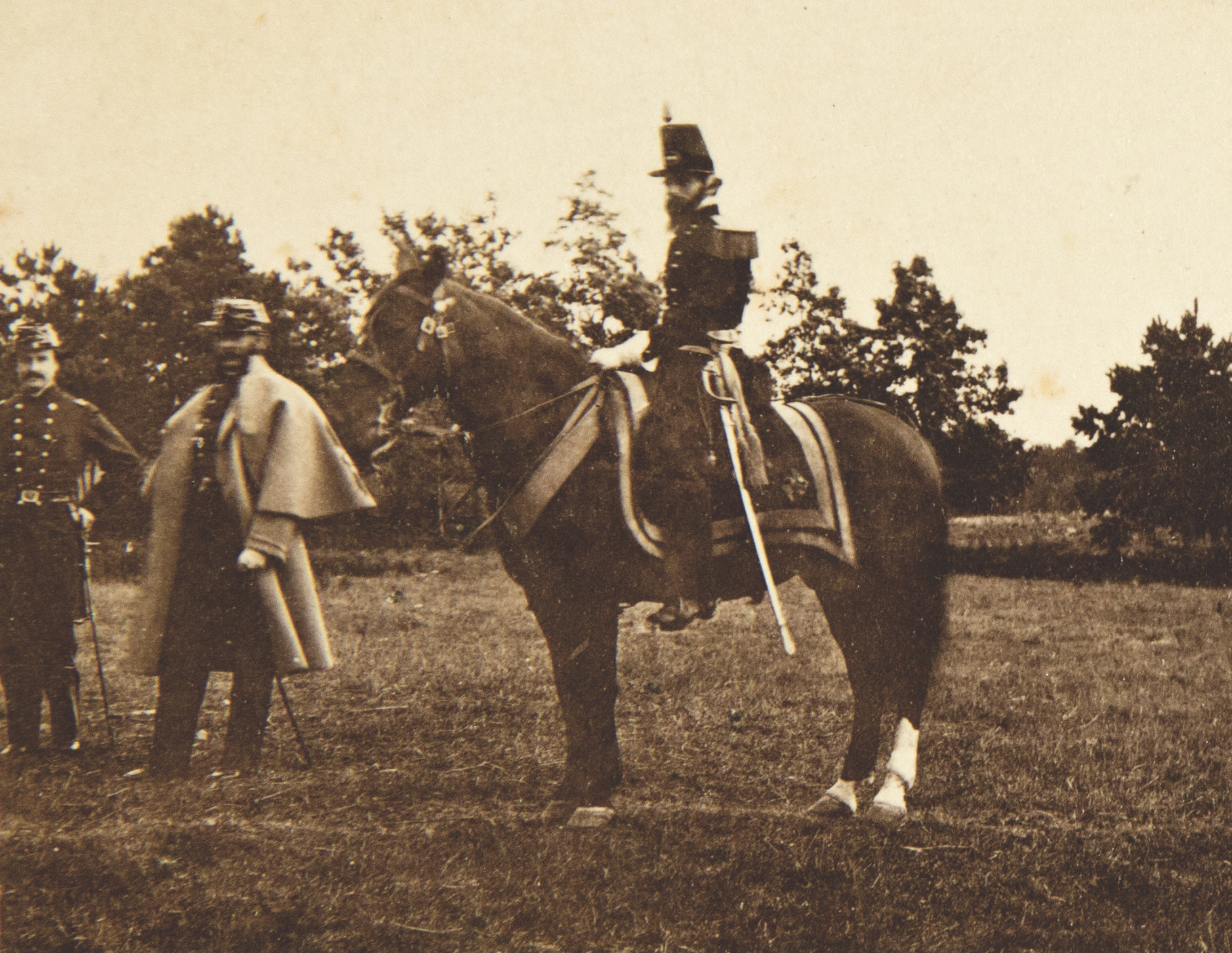
Photo #3 shows Colonel Williams astride his horse, with two officers standing nearby. The man wearing a greatcoat and forage cap may be 40-year-old Lt. Col. Horace B. Sargent (below). The other officer, unidentified, wears a field grade officer’s coat with two rows of six buttons.
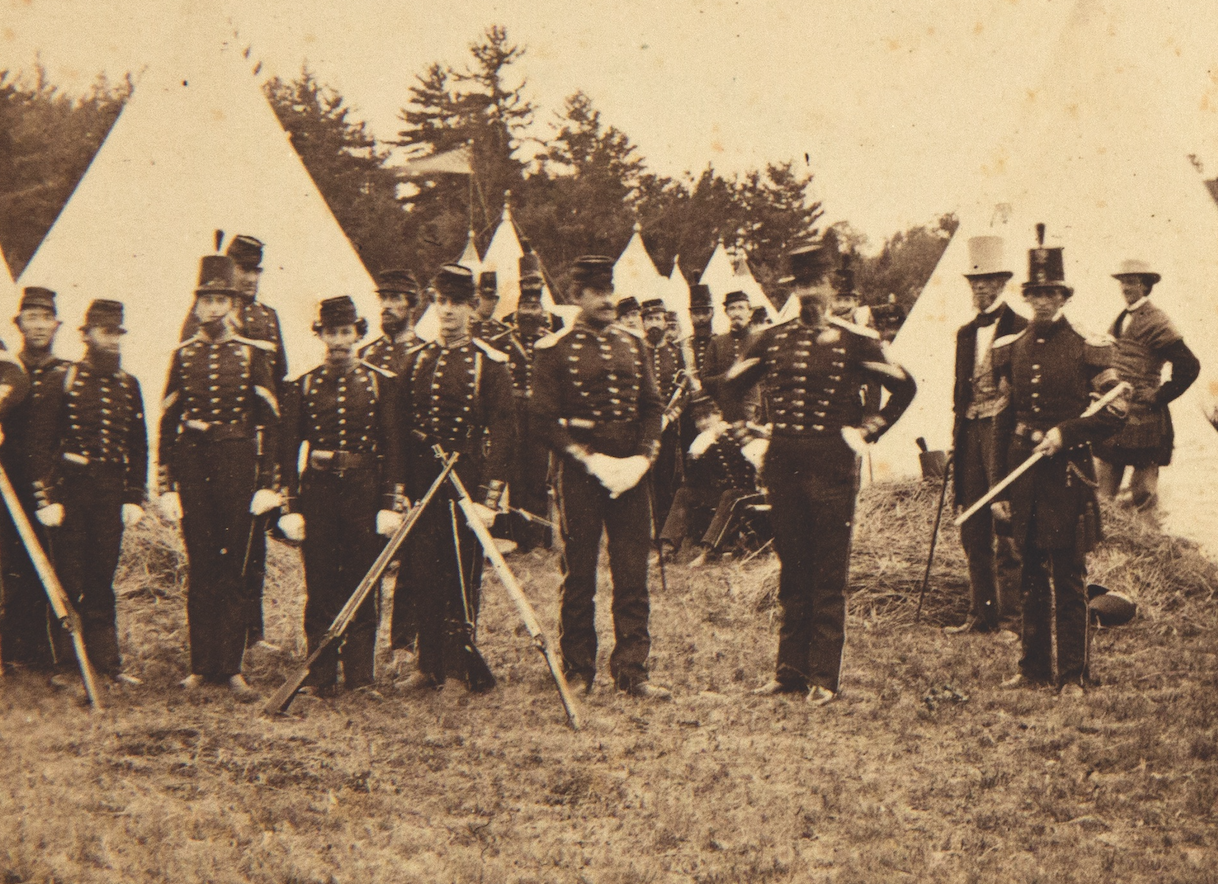
Photo #4 is the same grouping of some of the officers shown in Photo #2—the camera moved to the left showing the same line of trees in the background and more Sibley tents. A U.S. flag can be seen snapping in the wind from the top of one of the tents. From this view, the stacked rifles are clearly two-banded Pattern 1853 Enfield rifle-muskets.
The corporal standing to the right of center with his hands on his hips is wearing an 1858 U.S. Army hat. The officer immediately to the left of the corporal appears to be Nathaniel Bowditch, already identified in photo #2.
In the second row, just to the left of center, is Private Samuel Emory Chamberlain (1). Mustered in as a private on September 6, Chamberlain would be promoted to captain on November 25. He later became chief of staff for Brig. Gen. W.W. Averell and then a brevet brigadier general before the end of the war.
Also in the background are Captain Lucius Sargent (2) and Major John Edson (3), already identified in Photo #2. In between is 31-year-old Lucius Richmond (4), who led the North Bridgewater Dragoons before it was merged into the 1st.
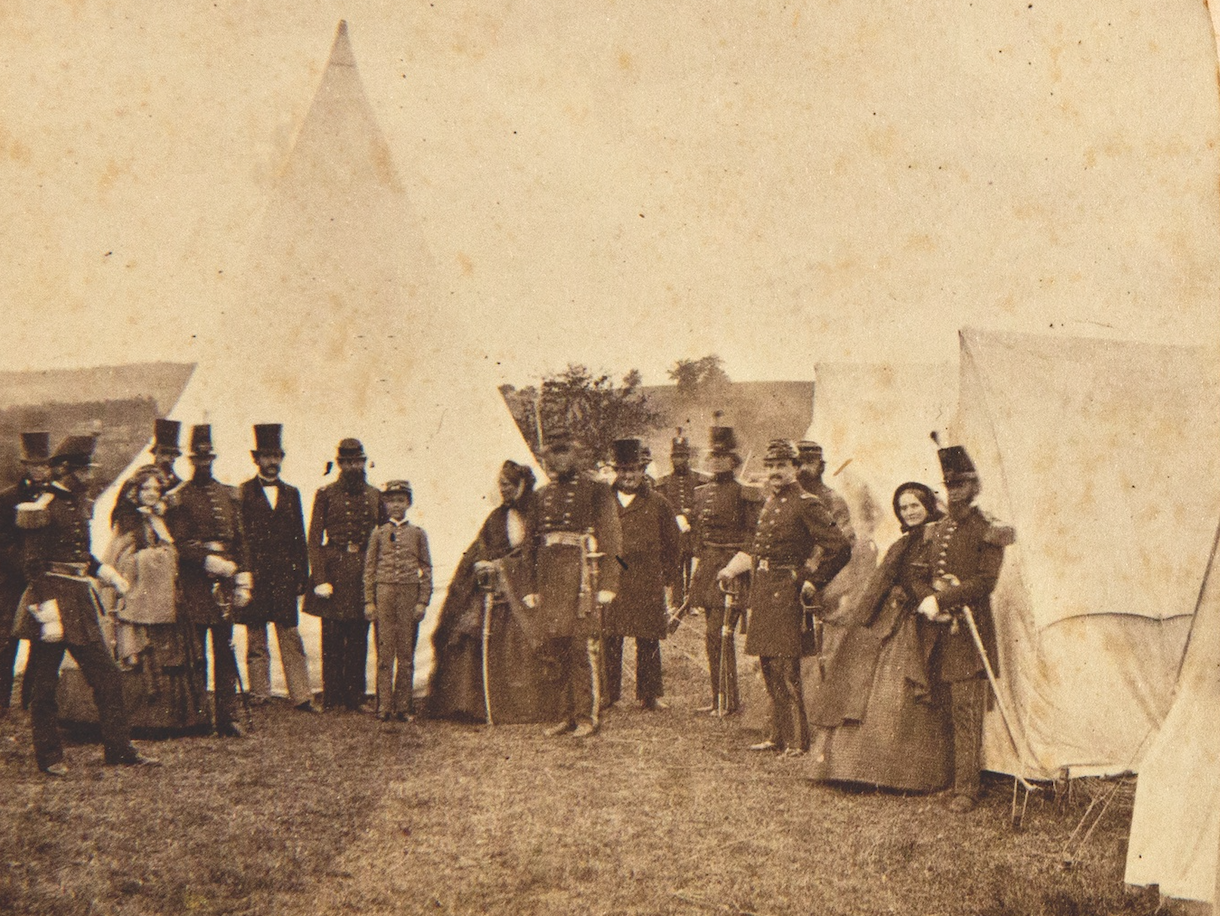
Photo #5 (top) shows Colonel Williams’ staff, many with their wives, against a backdrop of tents and rolling fields. A handler tends to the colonel’s horse, and Williams and his wife appear in front of the mixed group of individuals who have come to share in the excitement. The women all wear fashionable hoop skirts with bonnets and shawls.
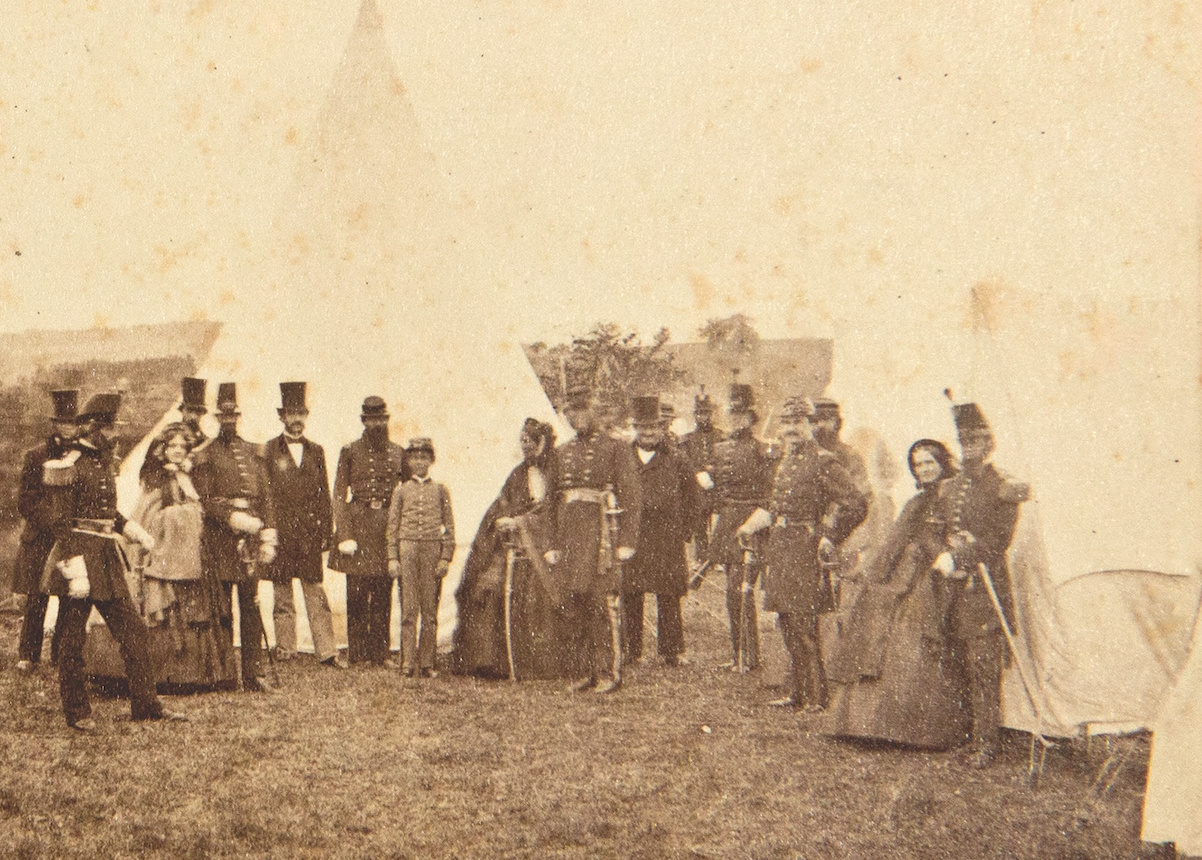
For Photo #6, the photographer moved his camera closer to where the horse was standing in Photo #5, as we see the same Sibley and wall tents. In this view, Colonel Williams is seen in profile at left. A civilian wearing a top hat stands in front of the Sibley tent. The young boy in uniform to the right is most likely the son of David Keith, who stands directly behind the boy. The woman just to the right of the boy is most likely his mother, Keith’s wife. Her hand rests on a Model 1860 Officer’s Light Cavalry Saber, with an open finger guard and swept blade.
Alan West, a Civil War collector and speaker, resides in Pittsburgh, Pa. He is the author of two Civil War books, including Christopher H. Tebault: Surgeon to the Confederacy (2020).

